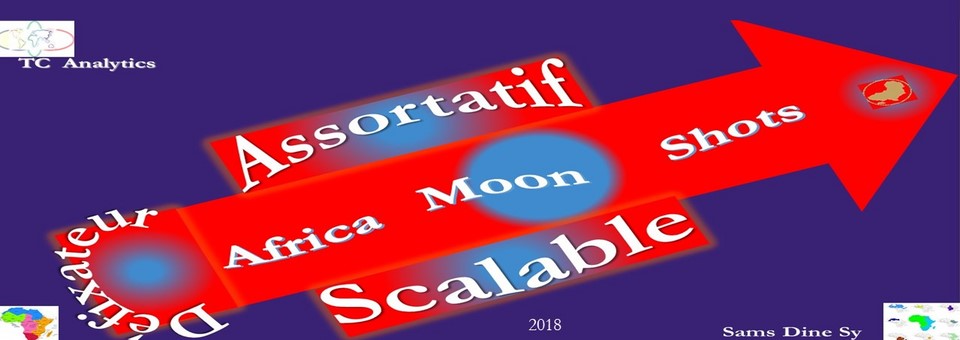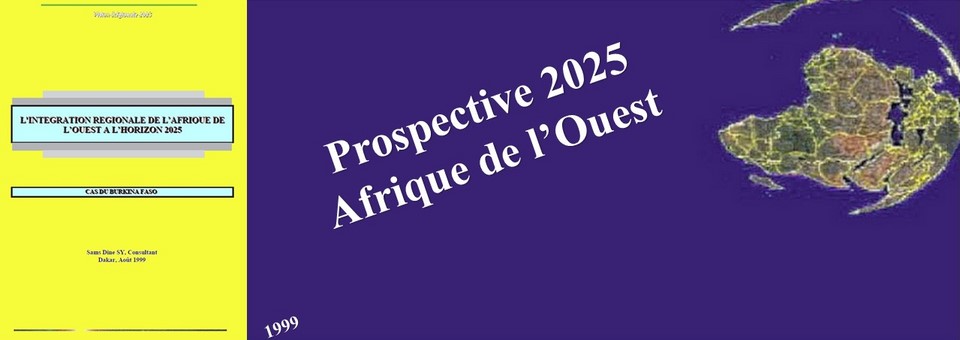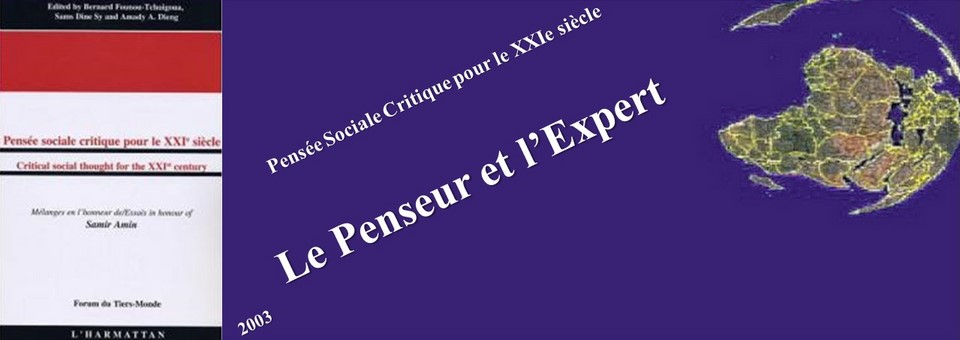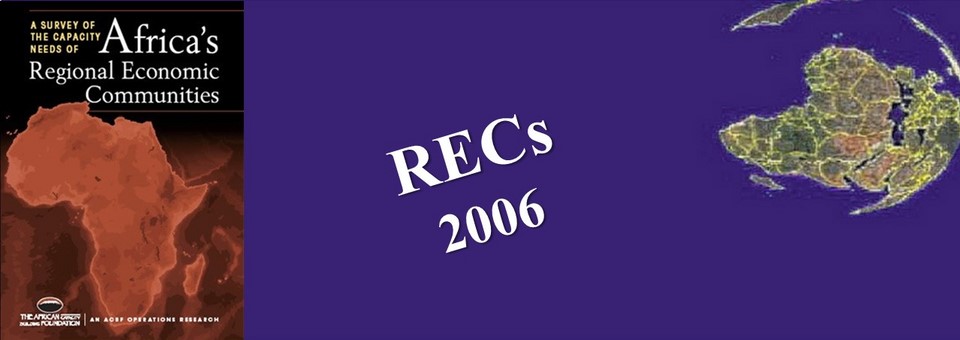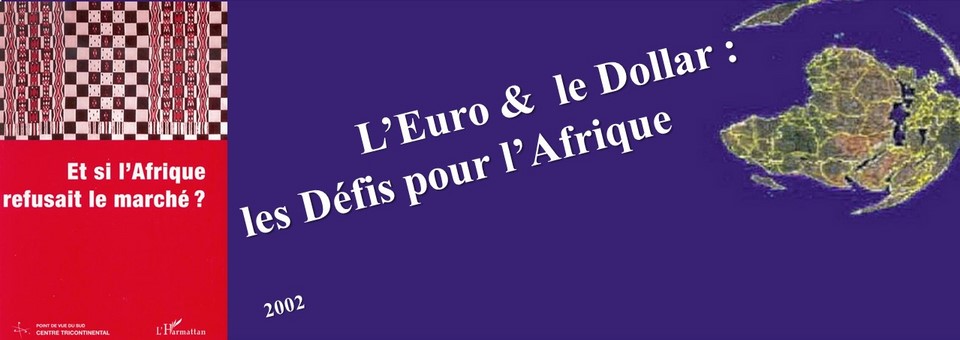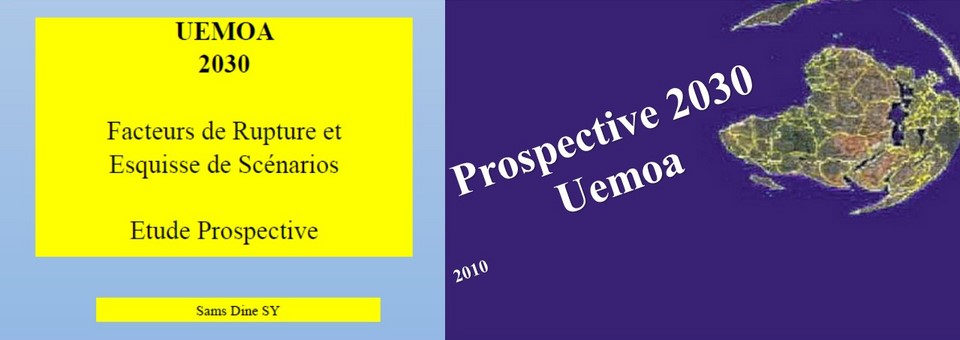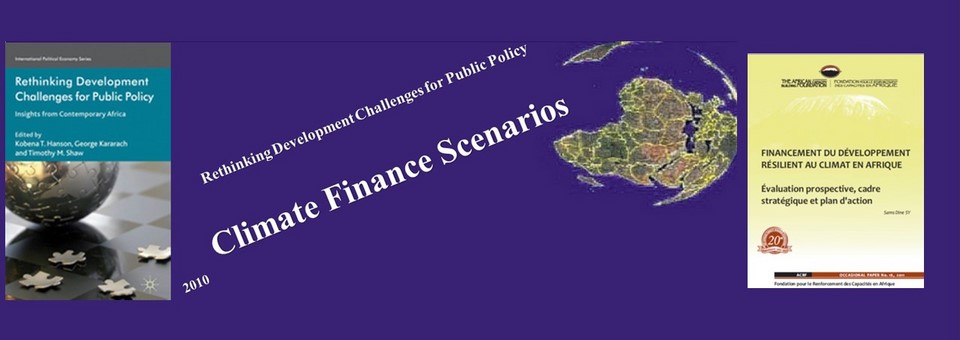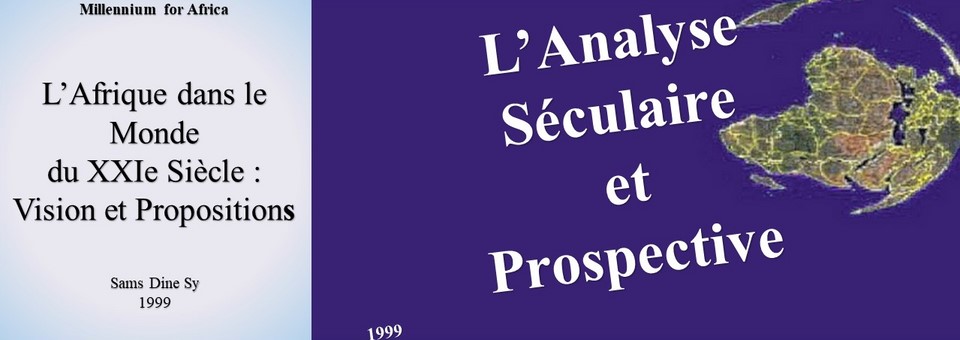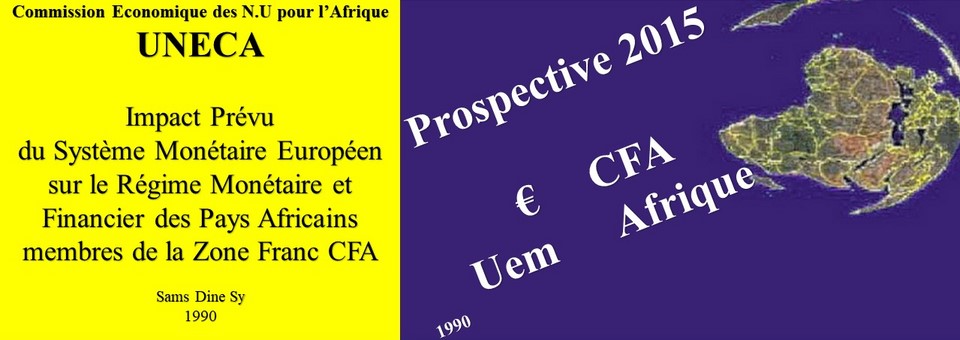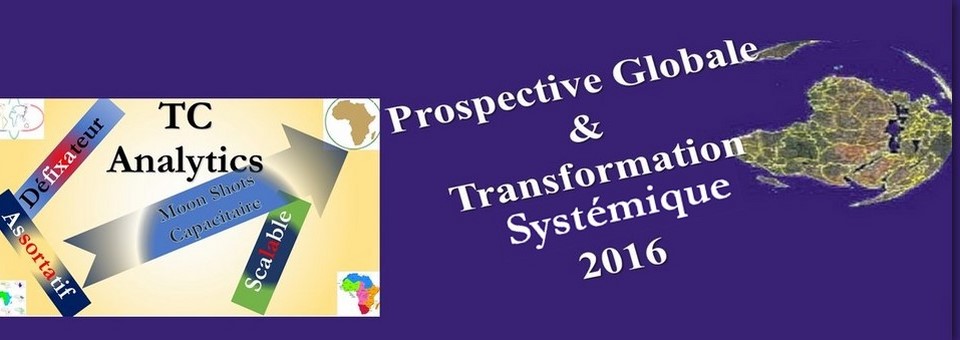Regional Foresight
EAC 2050
Crafting EAC Vision 2050
EAST AFRICAN COMMUNITY VISION 2050
Concept, TOR, Resources person and Support
Contributor:
Sams Dine Sy
INTRODUCTION
The East African Community (EAC) is a regional organization established by the governments of Kenya, Uganda and Tanzania; Rwanda and Burundi joined in 2007. While existing since 2000, founder members cooperate for almost a century under successive regional integration arrangements.
In accordance with Article 9 of the EAC Treaty the EAC, the institutional framework of the Community consists of the Executive, the Legislative and the judicial arms. The Executive arm is composed of the Summit of the Heads of State (playing the broad Vision setting role), and the Council as the policy making organ, the Secretariat which is the executive organ of the Community and EAC Institutions. The Legislative and Judicial arms are made up of the East African Legislative Assembly and the East African Court of Justice respectively. The functions, mandates, and operational frameworks of these Organs and Institutions are set out in the Treaty, Protocols, and Rules of Procedures.
The Vision of EAC, stated in the Treaty, is to attain a prosperous, competitive, secure and politically united East Africa. The Mission is to widen and deepen economic, political, social and cultural integration in order to improve the quality of life of the people of East Africa through increased competitiveness, value added production, enhanced trade and investment. The Brand of the East African Community is ‘‘One People, One Destiny’’.
The broad objective of EAC as stipulated in Article 5 of the Treaty is to develop policies and programmes aimed at widening and deepening cooperation among the Partner States in political, social and cultural fields; research and technology, defense, security and legal and judicial affairs. Objectives include the establishment of a customs union (2005), common market (July 2010), monetary union and ultimately political federation of East African States.
Article 5 of the Treaty stipulates that the Community shall ensure the:
a) attainment of sustainable growth and development of the Partner States;
b) strengthening and consolidation of cooperation in agreed fields;
c) promotion of sustainable utilization of the natural resource base in the region;
d) strengthening and consolidation of the long standing political, economic, social, cultural and
traditional ties;
e) promotion of people-centred mutual development;
f) promotion of peace, security and stability;
g) enhancement and strengthening of partnerships with the private sector and civil society; and
h) Mainstreaming of gender in all its endeavors among others.
The Fourth Development Strategy contributes to these aspirations given its regional character and priority.
BACKGROUND
Visions of the EAC Partner states
EAC Partners are diversified in terms of population, economic size, structure, incomesandnominal per capita GDP. Three countries are landlocked and three exploit natural resources. These differences constitute an obstacle that can be overcome only through a balanced distribution of objectives and costs of regional integration.
Although Partner States share in the dream of achieving a middle income status by 2030, national and the Treaty vision and strategies are prepared independently. The economic, social and political development for the EAC Partner States is supported by their strategic visions as indicated in the Table below.
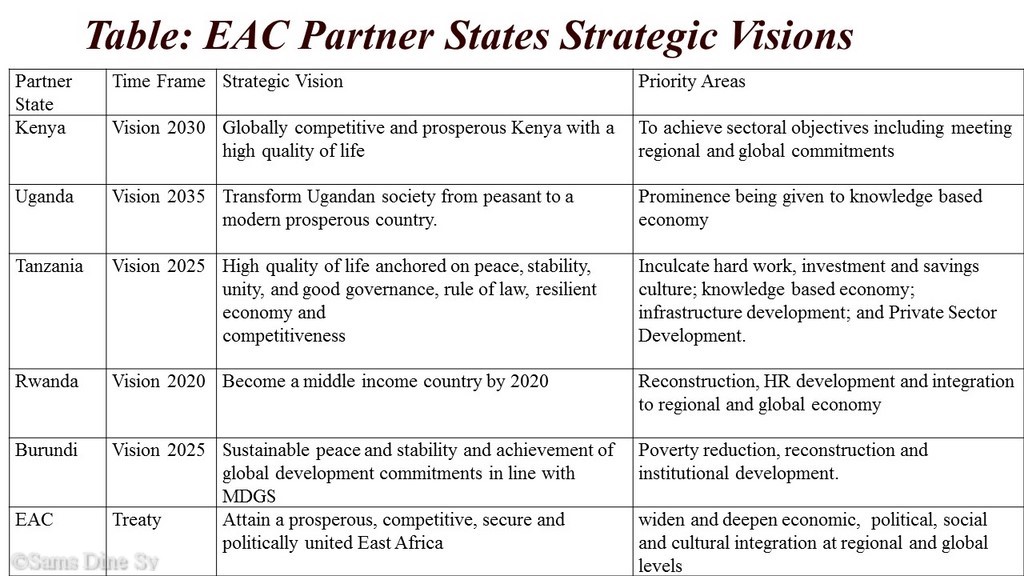
Project Objective
The overall project objective is to assess to what extent all these national visions are compatible with each other and with the Treaty’s vision and to align them.
The specific objective is to build a robust vision of the EAC for 2050. This will be achieved through consultation, dialogue, exchange of experience, knowledge sharing and in-depth studies.
The project helps EAC to ensure that the vision stated is shared by all partners by facilitating consultation, dialogue and in-depth analysis on costs and advantages of the single market, the single currency as the economic basis of the fiscal federalism, and of the East African Union. It contributes to the goal of reducing uncertainties, risks, transactions costs, and delays and increasing volume and value trade. It permits to prevent gridlock, spillback and output failure that are common at the early stages of regional integration because of misunderstandings in the distribution of the EAC economic value added to all stakeholders: citizens, partner states and non-state actors. The project will also contribute to the reduction of disputes and conflicts, that will accelerate the domestication and adoption of Protocols and related instruments signed and deliver outcomes.
The project will be implemented in a series of five phases, each of them focusing on one unifying themes of the vision.
The objective of the first phase is to assess robustness of existing visions at national and community level; the assessment will be undertaken through an impact evaluation of AEC development strategy and vision and empirical survey on several models of vision in Africa’s REC and other federation.
The second phase will focus on the single market completion by crafting the scenario of its completion and implication for the statement of the 2050 vision.
The third phase focus on the scenario of the introduction of single currency and implication for the formulation for the 2050 vision.
The fourth phase focus the fiscal federalism scenarios and it impact on the final stage of EAC Union, which is at the heart of the vision building process.
The fifth phase focus on the implementation of Master Plan at country, thematic and community level.
PROJECT DESCRIPTION
The different components or phases include:
Component 1:
Robustness of current visions underlying the implementation of EAC Treaty at regional, national and sectoral level
Sub-component 1:
Assessing past vision of the EAC partners, with regard to existing scenario crafted for the last 50 years at national, regional and continental level.
Sub-component 2:
Assessing coherence of Partners vision with EAC vision
Sub-component 3:
Preparing the Partners and Non State Actors to adopt a common vision for the next 50 years
Component 2:
Envisioning through the lens of the single market as a unifying theme of the East African Common Market
Sub-component1:
Study on the completion of the internal market and its potential economic and monetary impact on the EAC and Partners visionsSub-component 2:
Crafting the scenario of the completion of the single market (Template : Uemoa 2030)
Sub-component 3:
Formulation of the thematic vision of the single market and its robustness to various shocks.
Sub-component 4:
Formulation of the Master Plan for the completion of the single market during the current decade.
Component 3:
Envisioning through the lens of the single currency as a second unifying theme of the East African Monetary Union
Sub-component 1:
Crafting the scenario of the introduction/adoption of the single currency by Partners and stakeholders
Sub-component 2:
Formulation of the thematic vision of the single currency, and its robustness to shocks and adjustments without nominal exchange rate.
Sub-component 3:
Formulation of the Master Plan for the adoption of the EAC single currency, during the next decade.
Sub-component 4:
Simulation of the impact of the single currency through time (long run) and space (local and regional disparities).
Component 4: Envisioning through the lens of the fiscal federalism as a unifying theme of the East African Union
Sub-component 1:
Assessing the past and present of public finance in EAC partners: empirical analysis and current practices
Sub-component 2: Analyzing the implications for the EAC vision of federalism
Sub-component 3:
Crafting exploratory scenarios of fiscal union and there counterfactual
Sub-component 4:
Design of the vision of East African Union by 2050.
Component 5:
Implementation of Master Plan at country, sector and community level.
Sub-component 1: Master Plan for :
- Burundi
- Kenya
- Rwanda
- Tanzania
- Uganda
Sub-component 2: Thematic Master Plan
- Single market completion
- Adoption of the currency union
- Towards fiscal federalism and East African Union
Sub-component 3: Resources and results framework
TERMS OF REFERENCE
It is proposed that this assignment be undertaken by a competent consultancy firm (s) working closely with a multi-disciplinary team of experts from the Partner States and the EAC Secretariat. The objective of the consultancy is to assist the East African Community to prepare a comprehensive development vision, within the framework of the EAC Treaty and Visions of the Partner States, which will enhance regional growth and development and move the Community to middle income status.
The Consultant will undertake an in depth assessment of development issues, existing policies and strategies. This will entail a complete review of the implementation of Community development strategies, Partner States visions and development plans and provide broad-based coverage of the existing situation. Further, the Consultant will collate views and document strategic options and priorities from the consultation process and develop mechanisms for coordinating the implementation of the EAC Vision 2050.
The specific terms of reference of the consultancy are to:
- develop an in-depth situational analysis of the East African Community integration and development;
- specify the uncertainties and rank them using an agreed criteria
- identify stakeholder expectations that need to be factored in the process of formulating a long-term vision for the East African Community;
- review Partner States’ vision documents and identify the broad goals that needs to be taken on board while formulating the long-term vision for the East African Community;
- develop scenario and counterfactuals
- develop a matrix of stakes and key actors positions/motivations
- identify a set of strategic priorities and determine the desired future state for the Community and formulate a vision that will guide programming and activities of the Community towards the desired future state;
- Develop high level recommendations towards ensuring the attainment of the “EAC Vision 2050”and Master Plan
- Draw up a logical set of policy matrix (log frame) indicating the priority programs, action party, required resources and timeframe;
- Draw up an appropriate institutional framework and system for monitoring and evaluating progress in implementing the EAC Vision 2050;
- Propose and indicate funding requirements for the Vision 2050 broken down annually;
- Produce a clearly articulated “EAC Vision 2050” document; and
- Develop high level recommendations towards ensuring the attainment of the “EAC Vision 2050”.
Proposed Methodology
The Consultant shall conduct wide literature review on the regions’ development and consult relevant institutions, organs and departments of the East African Community including holding stakeholders’ meetings in the Partner States. In collaboration with the EAC Secretariat, the Consultant will organize and facilitate workshops, meetings and informal discussions in order to come out with top priorities for inclusion in the EAC Vision 2050.
Reports and Timeframes
In carrying out this work, the Consultant shall work closely with the EAC Secretariat, Organs & Institutions, coordinating Ministries in the Partner States, and other stakeholders. The Consultant shall report to the Deputy Secretary General (Planning and Infrastructure) who will be responsible for supervising this work.
The Consultants shall produce several reports as follows:
- Inception report by November 2013 (at the time of signing the contract).
- Interim report by 30th May 2014
- Final EAC Vision 2050 by 30th September 2014 including input from a Regional Validation Workshop to be held early September 2014.
Financing
To be done
EAC institutional capacity to monitor the visioning process
To be done
Profile of the Team and person resource
Forward looking specialist
Impact evaluation specialist and/or policy analyst
Economists
Social network analyst
List of known specialists
Forward looking/strategic foresight
McKinsey MGI BCG Deloitte PwC
Scenario crafting (IPCC Aproach)
Ottmar Edenhofer Nebojša Nakićenović
Impact evaluation/Policy analyst
Nicholas Stern Abhijit Banerjee Esther Duflo Olivier Cadot
Economists (trade, fiscal, macro and monetary)
Ben Bernanke Thomas Sargent Paul Krugman Paul De Grauwe Jean Claude Trichet Joseph Stiglitz Amartiya Sen Pascal Lamy Richard Baldwin Pol Antras Dani Rodrik Paul Collier John B. Taylor Lawrence H. Summers
Social network analysts
Countries team
Burundi
Kenya
Rwanda
Tanzania
Uganda
Support and knowledge sharing
AEC support staff
…
Other Africa’s RECs
AMU CENSAD COMESA ECOWAS IGAD SADC Tripartite Secretariat NPCA AUC
Other regional and sectoral grouping
Logistic supports
ACBF’s national Think Tank WAEMU Commission BCEAO AfDB EU Commission
European System of Financial Supervision, ESFS European Systemic Risk Board (ESRB) European Banking Authority (EBA)
European Securities and Markets Authority (ESMA) European Insurance and Occupational Pensions Authority (EIOPA)
ECB IMF World Bank BIS OECD WTO Other UN Agencies
